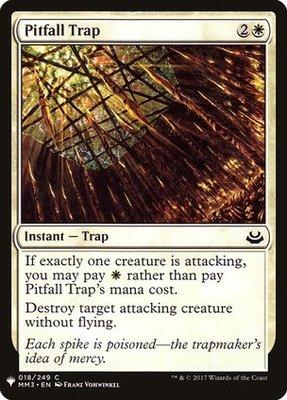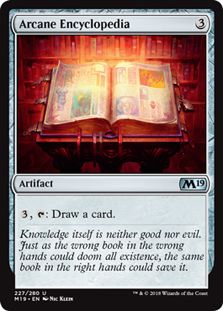A Brief History of my Historical Cube

The wake of social distancing has sparked a lot of creative ways to stay connected with those we care about. I have picked up the phone a lot more to reach out to old friends, scheduled happy hours over video chat, and played many digital games of Settlers of Catan in the past few weeks. And last Friday, the Lords of Limited Discord hosted its first Friday Night Magic. Using MtGA Draft, a third party draft app, we organized pods of 8 people and then imported our decklists to MtG Arena and used the 40 Card Deck Direct Challenge to battle out the rounds. It went off without a hitch. This draft website also allows for you to upload a custom card list which got my Cube Designer Brain all kinds of excited.
With a good Historic Cube list and enough people with extensive Arena collections or Wild Cards, you could have a clean and easy way to cube draft from the comfort of your own home whenever you wanted. So I immediately got to work on my very own Historic Cube. The full list, which is currently in its fourth iteration, can be found here. How did I arrive at this particular list? Let’s find out!
Goals

I set out with some clear goals in mind. Chief among them was the desire for a fairly flat power level. I wanted this to be the case for a number of reasons. A flat power level leads to draft decisions mattering more. You get rewarded for drafting a deck that is greater than the sum of its parts by cards building each other up rather than being lucky to open one of the most busted cards in the cube and casting it. Maybe it's just Theros Beyond Death leaving a bad taste in my mouth, but I didn’t want Dream Trawler or Ashiok, Nightmare Muse to invalidate the decisions made in prior turns. It’s a cube, so obviously there will be powerful cards, but you’ll see some notable omissions.
To the point of power level, I am including very few Planeswalkers. I like Plansewalkers to feel special in cube so that when one shows up, it’s a unique event for that game. I don’t know that this is something I will stick to, but for now I have enjoyed there being few Walkers and the power level of the Walkers themselves being low (you’ll see a handful are uncommons from War of the Spark.)
I also wanted there to be clear umbrellas for each color pair so I could give new drafters to the cube a rundown of the archetypes. This proved difficult to do with the shallow card pool that Historic has to offer. There are currently 2,618 cards legal in Historic which just doesn’t give you a lot of wiggle room (compare to the 19,426 cards legal in Legacy for example.) As much as I would have liked to, I couldn’t really make things like kindred Synergies or Lifegain Matters exist on a prominent level for my cube. This was just one of the many pitfalls I found myself in while designing the cube. And speaking of pitfalls...
Don’t Try This At Home

A little under a year ago, I wrote about overhauling my own proxy cube in paper. The size of that cube is 360 cards. I prefer that size for my cube because I often find it hard to get 8 people together, so you don’t usually see each card in every draft (which is the general criticism of this size). However, for the Historic Cube, this size felt too restrictive. I wasn’t able to give White both aggressive and defensive cards for the variety of archetypes I wanted while also giving each color pair enough dual lands to increase the number of playables each person could draft. But with the entire card pool being so small, 540 (the most common number for a cube) was too large. I would have to include too many mediocre cards to get to that size. So, I eventually found a happy medium at 450 which has felt like the perfect sweet spot so far.
Going up to 450 cards allowed me to relax on the themes of the color pairs. For the most part, this cube reflects the usual identities you’d find in any cube. Red and white are aggressive, green is ramp and fixing, blue has card draw and permission, and Black has removal and utilizes the graveyard. Beyond that it was hard to put a finer point on the color pairs save for some obvious ones like Rakdos Sacrifice, which has a lot of pieces in Standard alone. Azorius can be control but can also be a tempo flyers deck. As much as I would have liked to make Simic a +1/+1 counters and proliferate deck or a Flash deck, there just aren’t enough piece in the Historic card pool to make that happen. You don’t want to have cards that are single coloRed but are secretly just gold cards. Skatewing Spy, for example, would be sweet if Simic was a “counters matter” deck, but even then would essentially be taking up a spot in my blue cards when it only really belongs in one deck. When you have generally weak cards, or incredibly narrow cards like that, it can lead to an anemic cube.
I had the pleasure of having Cube aficionado and writer for Hipsters of the Coast Derek Gallen take a look at my cube list and give me some feedback. One of the pieces of advice he gave me regarding the multicolored section of my cube was to not be a slave to the spreadsheet. I had made sure that I had equal numbers of cards represented in every section: 5 in each guild, 5 dual lands per guild, 48 cards per color, etc. For the multicoloRed cards in particular, he encouraged me to think about cards as “reasons vs. rewards” for being in that color pair. This really opened my eyes to thinking about cards like Assassin's Trophy or Zhur-Taa Goblin differently. I would never move into Golgari or Gruul for those cards, respectively, so they’re fairly boring to include. I wanted the multicoloRed cards to feel special, to feel like pulls into that color pair or at least cards worth splashing for. Similarly, I started thinking about lands this way. Does Boros really want ETB tapped lands? Almost certainly not. But they would definitely like to have access to Castle Embereth and Castle Ardenvale. This my first time breaking away from my OCD about having complete cycles in my cubes and it’s felt incredibly freeing and, more importantly, like it's made the overall design better.
Lessons Learned

I think with such a small cardpool to draw from, it’s important to not try to reinvent the wheel. Letting the colors do what they naturally wanna do is going to lead to a stronger design. Also, keeping the curve low allows for all sorts of strategies to be viable. I’ve seen great versions of Mono red, Azorius Control, and 5 Color Fires of Invention from my cube so far, which is a great range of archetypes to allow for. You’ll have no trouble finding the fun, expensive cards to play, it’s the cards that keep those strategies in check that you need to work on including (or at least that’s what I needed to do.) And lastly, playtest! It’s been invaluable to see the decks that other people come up with and get feedback from folks about the cards they wished they had seen for their deck, the over and under performers, and how the games play out. Designing and refining this cube has been a blast and I encourage anyone with the inclination to get something like this started to dive into this creative space.
Stay safe out there everyone! And, as always, happy drafting!
